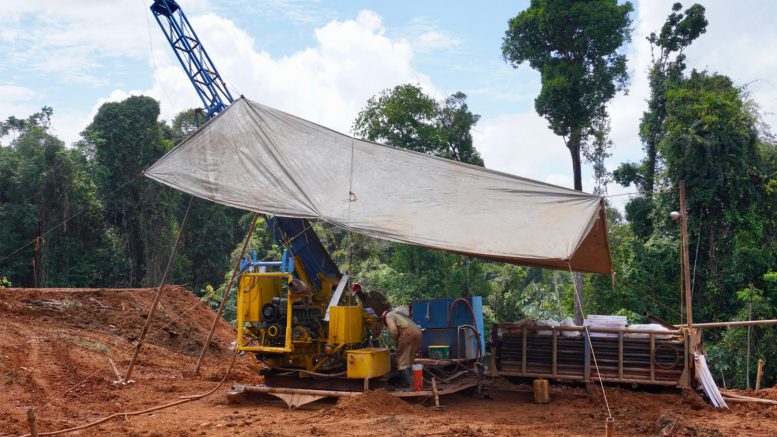Latin American projects are set to refill the mid-tier mergers and acquisitions pipeline, SCP Resource Capital says.
Recent transactions have opened doors for new mid-tier companies, SCP analysts wrote in a March 17 report. Apollo Silver (TSX.V: APGO; US-OTC: APGOF) and Unico Silver (ASX: USL) are stepping in as key players, while new mid-tier companies such as G Mining Ventures (TSX: GMIN; US-OTC: GMINF) could soon start looking for acquisitions, the Toronto-based fund added.
“With the return of geopolitics, we think investors, mid-tiers and majors are increasingly refocusing on the western hemisphere,” SCP’s research team wrote. “Recent M&A means that a new generation of development projects and discoveries are needed to replenish the resource triangle.”
Latin America has seen significant M&A activity in recent quarters, leaving a noticeable gap in the mid-tier market, SCP wrote. Most of the M&A activity has involved large-cap companies – as illustrated by Newmont’s (NYSE: NEM, TSX: NGT) recent sale of non-core assets.
A key M&A target is G2 Goldfields (TSX: GTWO; US-OTC: GUYGF), with AngloGold Ashanti (NYSE: AU; JSE: ANG) securing a major shareholding, SCP says.
Hochschild Mining (LSE: HOC) and Aura Minerals (TSX: ORA; OTCQX: ORAAF) are taking the lead in consolidating the market, SCP says. Pan American Silver (TSX: PAAS; NYSE: PAAS) has bought Yamana Gold’s Latam assets, while Coeur Mining (NYSE: CDE) purchased Silvercrest and First Majestic Silver (TSX: AG; NYSE: AG) merged with Gatos Silver.
Active buyers
Development-ready assets span key jurisdictions on the continent, and a handful have achieved recent milestones.
In Mexico, companies such as Apollo Silver advanced the Cinco de Mayo project to unlock value after acquiring assets from MAG Silver (TSX: MAG; NYSE-A: MAG). In Peru, Cerro de Pasco Resources (CSE: CDPR) gained mineral rights and access to tailings close to operating centers. In Argentina, Unico Silver combined assets in Santa Cruz to create a large resource base.
“We expect producers to be active buyers,” the SCP research team wrote. “Of the larger names, we think Lundin Gold (TSX: LUG; US-OTC: LUGDF), G Mining and Orla Mining (TSX: OLA) are potential movers while we think Hochschild, Aris Mining (TSX: ARIS; NYSE: ARMN) and Mineros (TSX: MSA) are all potential suitors for projects in the 75,000 – 100,000 oz. per annum range.”
With producers trading at average market capitalizations of US$700 million per 100,000 oz. of annual production and average US$1,446 per oz. all-in sustaining costs, SCP’s team thinks there’s room for producers to buy and build new projects as evidenced by Hochschild purchase and development of Amarillo’s Mara Rosa.
Attractive jurisdictions
Africa once attracted significant mining investment due to rich gold deposits and fast permit approvals. Now, investors are targeting fewer countries because of security and political risks. In Latin America, security is less of a concern than the varying permit rules, which differ by country and region, SCP wrote.
In the northern Andes, securing drilling and water permits and local community agreements is key. In the southern Andes and northern Mexico, water availability is a major factor. In the Guiana Shield, gaining access and ownership can be difficult, though permits come through quickly.
Federal governments issue permits in Mexico, Colombia, Ecuador, Peru and Chile. In Mexico, some regions provide quicker state-level permits for smaller projects.
SCP likes Brazil for its quick permits and strong mining history, and sees the Guyana Shield as good for exploration and fast approvals. The Andean Cordillera offers great mineral potential, despite political changes, while Mexico looks promising now with its new president after facing past issues.
Permit timelines in Latin America differ greatly from those in Canada, SCP says. In Canada, it can take up to 17 years from discovery to permitting.
Dealmaking
Since December 2019, SCP data tracked 28 M&A deals in Latam’s gold sector that involved at least one public company. On average, buyers paid 0.5 times the companies’ net asset value (NAV), which works out to roughly US$146 per oz. for gold reserves and US$39 per oz. for resources.
In other words, when compared to the current gold price, buyers effectively paid 7.8% of the market price for reserves and 2.2% for resources – equivalent to about US$227 per oz. for reserves and US$63 per oz. for resources when gold trades at US$2,900 per ounce. For transactions above US$20 million, these averages increase slightly to 0.6 times NAV, 8.7% of the gold price for reserves, and 2.3% for resources, according to SCP data.


Be the first to comment on "Latam assets set to refill depleted mid-tier M&A pipeline, SCP says"